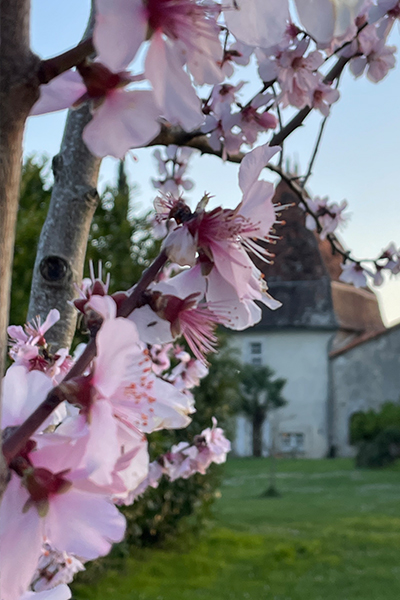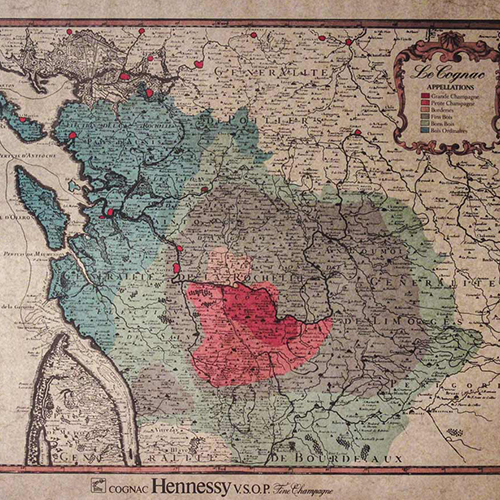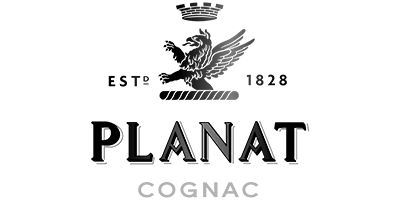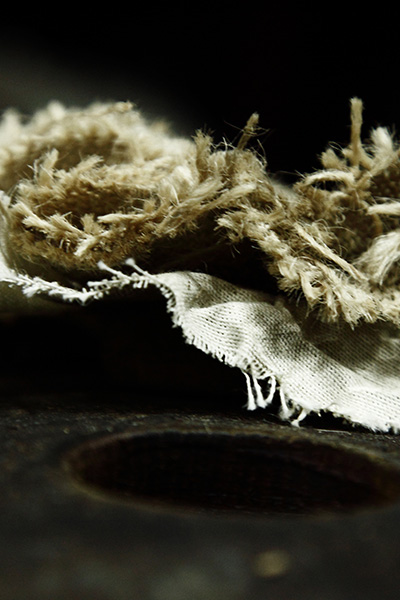Floral is a term that’s often used when describing the aroma and taste of a Cognac. Such technicalities can be difficult to understand—especially if you’re at the beginning of your Cognac tasting journey. The following is an aid to demystifying the concept, from explaining what floral means through to 12 great floral Cognacs, plus expert producer interpretation into what is a complex subject.


What Does Floral Mean?
The definition of floral
Floral aromas and taste within a Cognac are defined by their similarity to flowers in nature. Some of the most common descriptions you might find in tasting notes include violets, jasmine, orange blossom, iris, potpourri, and acacia. You might also see more generic descriptions, such as simply “flowers” or “dried flowers”.
What the term means is that the liquor has more hints of floral aromas and taste when sampled, as opposed to having a stronger leaning towards fruitier tendencies.
Where do floral notes come from?
The scents and taste of a Cognac are dependent on the molecules and their degree of concentration within the liquid. Together, these combine and react to create a unique profile. The presence of these molecules is directly affected by various factors during the growth and production of eaux-de-vie, including:
- Grape variety
- The soil
- Climate
- The production process




In addition, there are other elements not directly associated with the growth and production process that influence our experience of floral notes within a Cognac. These include:
- The temperature at which it’s served. For example, room temperature, hand-warmed, chilled, etc.
- The type of glass used to taste Floral Cognacs
- How well the Cognac has been conserved. For example, has a Cognac bottle been kept in the ideal environment and how long it’s been stored.
- Your personal aromatic and taste perception
Aromas and our perception of them can be grouped into three classifications: primary, secondary, and tertiary.
- Primary aromas: These are those related to the vine. This includes the variety of grape, terroir, seasonal climate, etc.
- Secondary aromas: Those derived during the process of fermentation
- Tertiary aromas: Aromas that are acquired during maturation and refinement
A good example of a primary aroma is that of violets—something that’s very prevalent in Cognac’s from the Borderies terroir.
What are typical floral notes?
In addition to those mentioned previously, some of the most common floral tones you might experience or see listed in a Cognac’s tasting profile include vine flowers, honeysuckle, rose, wild carnation, lavender, citrus blossom, and lilac.

What other spirits have floral notes?
Floral taste profiles are very on-trend, meaning other spirit distillers are keen to promote them. In addition to Cognac, which has always boasted both floral and fruity tones, Armagnac is one that immediately springs to mind.
Gin is another, with fresh and floral profiles being one of the distinct profiles associated with this white spirit. Whisky can also offer floral tones, although these tend to be less dominant than you might find in Cognac. Vodka makers are also jumping on the bandwagon, with flavors being added to do so, such as hibiscus and rose.
Floral taste vs. floral aromas
To understand the difference between floral taste and floral aromas, it’s worth revisiting our comprehension of both taste and smell. A basic explanation is that the former is sensed by the taste buds on the tongue and within the mouth—the latter by the olfactory bulb within the nose.
Taste occurs with the mouth. It’s how the tongue and the rest of the oral cavity interact with food and drink. There are two types of receptors here: those for taste (the taste buds) and one for the feel of what we ingest. This is referred to as “mouthfeel” and is sensed by nerve endings within the mouth and across the tongue. Mouthfeel is affected by the viscosity and texture, as well as tannins within the Cognac.
Aroma is a very complex area that links directly to our subconscious. Certain bouquets have the power to trigger powerful emotions as well as the immediate sense of what we smell. Alcohol carries aromas easily because it evaporates so quickly—just one of the reasons that the whole Cognac tasting experience includes spending enough time experiencing the “nose”.
Together, both the taste and aroma profile converge to create what we describe as the flavor of what we’re eating or drinking.
The BNIC Aroma Wheel
As you can see from the BNIC aroma wheel diagram, floral tones fall into the springtime quadrant. The classic understanding of floral Cognacs is that of a zesty, aromatic blend that is often—but perhaps mistakenly in some cases—associated with younger eau-de-vie.

The age debate: are floral Cognacs always young?
While it’s true that floral tones are very typical of young Cognacs, there are instances where older blends also have floral undertones. This is most usually down to a particular terroir, such as the Champagnes or the aforementioned Borderies with shades of violet, or a particular year. If the weather and environmental conditions of a harvest were such that the floral attributes were enhanced, then that eau-de-vie will also bring floral notes to a Cognac’s taste profile, no matter what its age.
Over to Our Cognac Lovers Community
Taste and aromas are, as always, subjective to the person enjoying the Cognac. As we become better versed in defining our taste experience, we begin to appreciate the finer nuances of every Cognac we sample. It’s one of the joys of eaux-de-vie and means that the journey is enjoyable and, very importantly, never-ending.
Our Cognac Lovers community is a wonderful example of the diversity of those who enjoy France’s most iconic drink. From the person who’s just tried their first sip to those with thousands in their repertoire, we love to hear what our followers get from their tasting experiences.
For example, when we asked Jesse L. Cyr what floral Cognacs came to mind, he said:
“Pierre Ferrand Ambré, Dudognon Reserve, Leyrat VSOP Reserve, Fevrier Saveurs, and Grateaud Bouquet des Borderies are what I can think of off the top of my head. Each has distinct floral aromas or flavors. The Grateaud and Ferrand are probably the most floral with violets and roses, respectively. The Leyrat and Fevrier have strong fruit blossoms and the Dudognon is more about white flowers”.
Mark Hanson said:
“Generally younger Cognac will be floral in nature: Delamain Pale and Dry comes to mind”.
The Cognac Camus range featured strongly amongst our followers. Doug Barber was one fan, Sebastien Cotte pinpointed the Camus Borderies XO, and John Go said:
“The range of Camus that was distilled on the lees has been the most floral of Cognacs I’ve tried.”
Michael Tran also echoed the Camus trend, with the Return to Saint-Aulaye. He also mentioned our Sophie & Max Selection No. 2.
Of course, there’s always that exception to the rule, as we talked about above regarding older Cognacs with a floral profile. Dale Cooper echoes this, saying:
“I’d try Cognacs from the Fins Bois region. You must be thinking of the Prunier XXO, like me.”
Prunier’s first XXO also happens to be the first Cognac in its Family series, a collection of Cognacs produced in very small quantities. The Prunier XXO has been crafted from a blend of two vintage Cognacs, from the years 1992 and 1996. The vintage eaux-de-vie was sourced from the Fins Bois terroir and aged for a minimum of 14 years in dark, humid cellars on the Prunier family’s estate.
Ask the Experts: Producer Interpretation
A discussion about floral Cognacs wouldn’t be complete without turning to the experts—the producers themselves. We spoke to the Cellar Masters/Directors of three notable houses:
- Prunier Cognac
- Planat Cognac
- Hardy Cognac
We posed the same 5 questions to each of them. Read their answers below.
Prunier Cognac


The Cognac house Prunier dates back to 1665, when Jean Prunier, a renowned Cognac expert from the area of La Rochelle, began producing wine and brandy. He began shipping his products around the world in the early 1700s, and Cognac Prunier was born. Today, Cognac Prunier has now entered its 11th generation and is still housed in the same medieval house in Cognac that it has been for the past two centuries. It is still a family run business which is at present headed by Claude Burnez’s son, Stéphane Burnez who took over in 2009. The 11th generation of the family to join the house of Prunier is Stephane’s daughter Alice who joined forces with her father in 2016.
Our questions were answered by Alice.
Q1: What is your opinion on floral Cognacs?
Cognacs can have floral notes but not in isolation. They come from certain terroirs or certain years (harvests), rather than the method of distillation. Floral notes are less prevalent than other types and are more present on younger Cognacs. Therefore, they are typical of younger eaux-de-vie.
Q2: What are floral notes/aromas?
Rose, violet, iris, and white flowers are some of the most common.
Q3: How do you get floral notes in Cognac?
Certain terroirs bring a more floral profile to an eau-de-vie.
Q4: Is there a particular way to drink and enjoy a highly floral cognac?
Floral Cognacs are particularly fine and delicate. To best appreciate these, drink the Cognac neat, rather than in a cocktail or the addition of a mixer.
Q5: Which of your Cognacs have the highest floral profiles?
The 20-year-old Prunier is particularly delicate and floral.
Planat Cognac


Founded in 1828 by Abel Planat, Cognac Planat enjoyed early global success, just thirty years into its inception. It was also one of the first Cognac brands to be sold in the United States at the turn of the 20th century, making it one of the most important businesses in the Cognac region. Planat Cognacs are produced by organic winegrowers across the four main crus. The house is the first organic operator in the Cognac region, illustrating both a commitment to the environment, as well as offering unique and authentic products. Look out for vinosity and aromatic complexity in their range. Their eaux-de-vie are aged by the expert cellar master and his team, using time, casks, and climate as their tools.
Our questions were answered by Julien Nau (Director) and Sebastien Gautriaud (Cellar Master).
Q1: What is your opinion on floral Cognacs?
Julien: There are two main families of floral cognacs: the young and the old. Both deserve our attention because these notes are generally the proof of great technical mastery by their producer. They are very versatile—almost faceted—and, depending on the moment, can express the aromas of different flowers.
Sebastien: For the floral Cognacs, we are more on those from the Champagnes, Cognacs distilled without lees, somewhat akin to the Martell method.
Q2: What are floral notes/aromas?
Julien: Fruity and floral notes are very present in young Cognacs when we’re referring to the flowers themselves. Firstly the flowers of the vines themselves, which are clearly perceptible in the Cognacs before they are run off. Then comes to mind a collection of white flowers: jasmine, honeysuckle, rose, lily of the valley… Older Cognacs can express heavier and more persistent notes, like iris or the famous violet.
Sebastien: Aromas of white flowers such as daisy, hay, bluegrass, laurel, and lime.
Q3: How do you get floral notes in Cognac?
Julien: These are the expression of certain terroirs with a predominantly floral character: certain parts of the Fins Bois and, notably, Petite and Grand Champagne. Then, a Cognac distilled with either limited or no lees, along with a barrel choice with tannins that don’t overpower the delicate floral notes.
Sebastien: With clean wines for distillation. In other words, racked immediately after fermentation and with a “Martell” method and more to age on fine-grained wood.
Q4: Is there a particular way to drink and enjoy a highly floral cognac?
Julien: Enjoy them in every possible way.
Sebastien: Young floral Cognacs, such as Planat Oscar, should be drunk with Cognac cocktails. Older floral ones, those 25 years plus, should be enjoyed as a digestif.
Q5: Which of your Cognacs have the highest floral profiles?
Sebastien: The organic Cognacs generally have more white flower tones, except for the Delamain Cognacs, which also lean towards spicy notes.
Hardy Cognac


1863 saw the English wine and spirits merchant, Anthony Hardy decide to make his home in Cognac. In keeping with his new surroundings, he changed his first name to Antoine and decided to continue in the business he knew so well – trading -, setting up as both a distiller of cognac and a dealer. Since 1999 Hardy Cognac is officially called Hardy Cognac S.A. Jacques Hardy also retired in this year, but the family tradition is continued to this day by two of his family members. Both Bénédicte and Sophie Hardy – two women, which is rather unusual in the cognac industry – run the house. Concentrating mainly on the ‘luxury’ end of the market, Hardy Cognacs top end cognacs are presented in beautiful crystal decanters.
Our questions were answered by Bénédicte.
Q1: What is your opinion on floral Cognacs?
Floral cognacs are charming and full of promise… They’re mostly young eaux-de-vie that are classified in the “age of flowers”. When you have iris, jasmine, or violet on the nose, the magic happens, and the taster is more inclined to forgive the vivacity of these young Cognacs.
Q2: What are floral notes/aromas?
For me, the main floral aromas are violet and iris (Borderies), vine flower (Grande Champagne and Petite Champagne), lilac (Fins Bois). Rose notes can also be found in certain cognacs, such as our XO, for example.
Q3: How do you get floral notes in Cognac?
Everything comes first from the terroir and then from the distillation. If we distill with the lees, it’s a taste enhancer. If the character of the wine is already marked by floral aromas, this will only amplify it.
Q4: Is there a particular way to drink and enjoy a highly floral cognac?
I don’t know if there’s a way to appreciate floral cognacs, but for me, it’s a renewed pleasure to drink it in a cocktail or simply in a beautiful tulip glass.
Q5: Which of your Cognacs have the highest floral profiles?
Our VSOP Organic, our VSOP Fine Champagne (vine flowers, lilac), our XO Rare with its rose aromas are, in my opinion, our most floral cognacs even if these aromas are intimately linked to vanilla, rancio, and fine notes of blond tobacco.

Top 12 Floral Cognacs List
To help select a distinctly floral Cognac for your appreciation, we’ve put together a top 10 list of those that we feel are great expressions of floral delight.

1. Camus Borderies XO: A multi-award-winning, rich, family reserve that perfectly balances the floral-fruit expression. From nose to finish, the delicate tones of violets and spring flowers linger long after the last swallow.
Find this Camus Borderies XO Cognac on our shop.
2. Hardy Noces D’Or: Proving that older Cognacs can indeed have exceptionally delicate and notable floral tones. Enjoy a nose that’s dominated by lilac, violets, and white flowers.
Find this Hardy Notes D’Or Cognac on our shop.
3. Planat Oscar 45% Organic: Enjoy a nose that evolves from exotic fruits into a distinctly floral profile. Cherry tree blossom, rose, white flower… It’s a rollercoaster ride for the senses.
Find this Planat Oscar Cognac on our shop.
4. Prunier 1978 Borderies: This older vintage offers a complex tasting experience. Breathe in the wonders of orange blossom and violets before being transported onto a well-aged and delightful sensory journey.
Find this Prunier 1978 Borderies Cognac on our shop.
5. De Luze XO Fine Champagne: A floral masterpiece, boasting medlar flowers and jasmine.
Find this De Luze XO Cognac on our shop.
6. Raymond Ragnaud 1990: Another Grande Champagne bursting with spring flowers and a melange of floral bouquet.
Find this Raymond Ragnaud 1990 Cognac on our shop.
7. Lheraud Vintage 1971: A fabulous example of a spring-like floral profile from the Fins Bois terroir.
Find this Lheraud Vintage 1971 Cognac on our shop.
8. Godet Single Grape Folle Blanche: A delicate blend that’s brimming with the elegance of violets and lilac.
Find this Godet Single Grape Folle Blanche Cognac on our shop.
9. Léopold Gourmel Extra Age des Fleurs 15 Carats: A fabulous example of a truly floral profile. White flowers, linden, honeysuckle, and more continue throughout the tasting journey.
Find this Leopold Gourmel Age des Fleurs Cognac on our shop.
10. Pierre Ferrand Ambre: Rose, violet, and spring flowers are wholly evident on the nose and palate.
Find this Pierre Ferrand Ambré Cognac on our shop.
11. Claude Thorin Grande Champagne Vintage 2004: A great example of how a vintage brings extraordinary floral tones to a taste profile.
Find this Claude Thorin 2004 Cognac on our shop.
12. Sophie & Max Cognac Expert Selection No. 2: Our own special offering was singled out by one of our Cognac connoisseurs as being a great example of floral delicacy. Keep your eyes out for an upcoming announcement regarding the next Cognac in our sought-after series… Unfortunately, it is already sold out, but rest assured that we are working on something new. Receive an e-mail notification by following the brand on our shop.
In Conclusion
We have to say, it’s truly interesting to see the almost opposing views of some of the cellar masters as to their thoughts about floral Cognacs. It just goes to show how subjective taste and flavor are, not to mention that there’s no “right” way to sip and enjoy eaux-de-vie. It’s also interesting to see that multiple experts and aficionados have mentioned organic Cognacs as having particular floral notes.
To highlight the most important points covered, we can sum up as follows:
- Floral notes are fine and delicate
- Cognacs with a floral profile are often younger—perhaps a VS or VSOP. However, there are instances where older Cognacs still possess delicate floral attributes
- Floral Cognacs are often associated with springtime enjoyment, as shown by their place on the BNIC aroma wheel.
- A floral profile is influenced by terroir, environment, and that climate during the growth year and harvest
- Floral tones can be further explored by the choice of Cognac glass, temperature of the liquid, and the correct storage of a bottle.
- Because of their delicacy, floral notes can be some of the most complex to experience.
And the Cognac Expert solution to the last point? Well, you’ve just got to increase your tasting repertoire. If we’ve piqued your interest, then maybe a targeted choice of a particularly floral expression should be the next Cognac to sample. Enjoy…Ready to further enhance your Cognac knowledge? Head over to our page, What does Cognac taste like? for more information.











